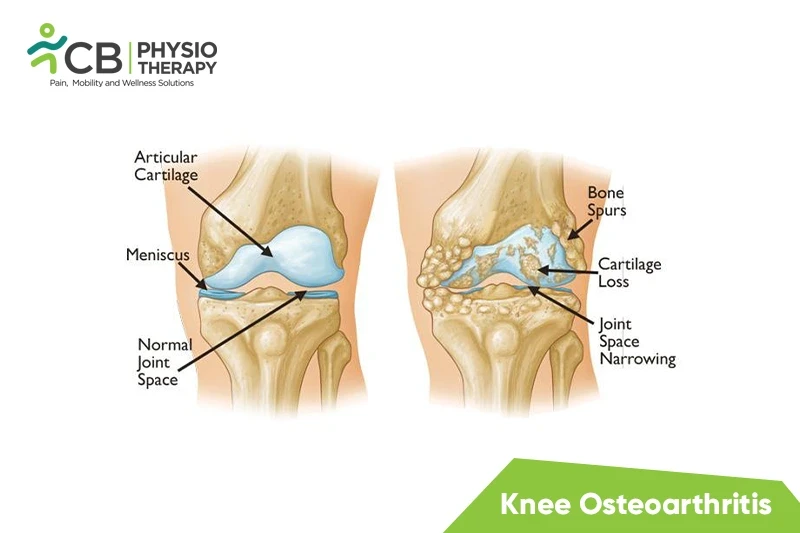
Osteoarthritis of the knee occurs when the cartilage in the knee joint breaks down, causing the bones to rub together. The friction makes the knees hurt, become stiff, and sometimes swell. While osteoarthritis in the knee can't be cured, there are many treatments to slow its progress and ease the symptoms.
Women are more prone to osteoarthritis than men and usually occurs after the age of 40. Other causes of knee osteoarthritis are:
The symptoms of this condition vary from patient to patient, the common symptoms may be:
Pathology:
Osteoarthritis is the degradation of the cartilage and thickening of the synovium, the subchondral bone begins to remodel forming lytic lesions.
Physical examination:
The examiner does the physical examination and asks about the medical history. The physical examination includes the knee joint area, pain, tenderness, range of motion, joint stability, and the pattern of walking
X-rays:
X-ray creates detailed images of bones. In an X-ray, an arthritic joint may show changes in the bone like narrowing of the joint space, and the formation of osteophytes.
Magnetic resonance imaging (MRI):
Magnetic resonance imaging (MRI) is used to check damage to soft tissues.
Bone scan:
A bone scan helps to find and locate the condition of the bone and soft tissues of the knee.
Medications: Non-steroidal anti-inflammatory drugs (NSAIDs), painkillers, corticosteroids, viscosupplementation, etc.
Note: Medication should not be taken without the doctor's prescription.
Surgery:
Surgery is done in case the symptoms are not relieved by conservative treatment.
Surgical treatments include:
Cryotherapy or cold therapy reduces knee pain, stiffness, and swelling.
Thermotherapy or heat therapy improves blood flow, removes toxic substances, and decreases pain. It also improves flexibility and range of motion.
Knee brace:
A knee brace or adding shock-absorbing inserts in the shoes can reduce pressure on the knees.
Orthotics:
Using orthotics such as insoles or special footwear can also be helpful.
Therapeutic ultrasound helps to decrease inflammation and joint stiffness.
Transcutaneous electrical stimulation (TENS):
Transcutaneous electrical stimulations (TENS) send electric stimulations, through pads placed on the skin, to relieve pain.
Interferential current therapy (IFT):
Interferential current therapy (IFT), is another electrical modality used to decrease pain and increase mobility.
Hydrotherapy:
Hydrotherapy is given by immersing the body for 15 to 20 minutes in water which causes the weight-bearing muscles to relax, by alternatively doing simple flexion-extension exercises range of motion is increased.
Manual therapy consists of several techniques like myofascial release, manipulation, and mobilization that increase the quality and range of movement of the knee.
Range of motion Exercises:
Range of motion exercises are started with PROM (passive range of motion) exercises of the knee and slowly progressed to active exercises.
Strengthening Exercises:
Strengthening exercises are taught to restore strength, endurance, and agility. These include the use of weight cuffs, resistance bands, and cardio exercise equipment such as treadmills or stationary bicycles.
Stretching Exercises:
Physiotherapists use stretching techniques to gently move the joint and stretch the soft tissue. Daily stretching increases the range of motion and mobility.
Aerobic Exercises:
Aerobic exercises like a stationary bike, speed walking, vigorous swimming, etc can also be done without stressing the knee joint.
Though the effects of knee osteoarthritis can't be reversed. But treatment and self-care can help relieve the symptoms and slow the progress of the condition. The patient is advised to maintain a healthy weight, take plenty of rest, and add light strength training to the fitness routine. Jogging or running should be done on grass or soft surfaces.
Select your City to find & connect with our experts regarding Physiotherapy for Knee Osteoarthritis